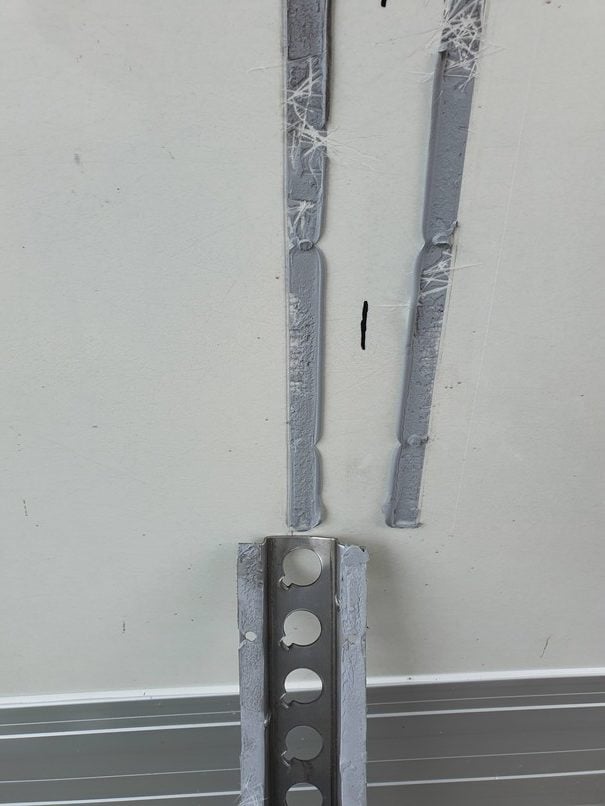
So you have purchased the right adhesive for your application. Now, you need to make sure that you store the adhesive correctly. You’ve spent enough time and money choosing the right adhesive. You need to make sure that the adhesive is not damaged by poor storage.
Here at Forgeway, we manufacture industrial adhesives. We often see poor storage damage the performance of adhesives. But the consequences of poor storage don’t stop there.
In this article, we will go through the consequences of poor storage. Then, we will discuss what you should always do when storing industrial adhesives. By the end of the article, you will know the consequences of poor storage and how to avoid those consequences.
Why you should store industrial adhesives correctly
You know that poor storage is something that adhesive manufacturers repeatedly go on about. But it just seems more like another tick-box for them to cover their own backs rather than being any use to you. It isn’t quite like that though.
You are much more likely to experience consequences if you don’t store your adhesives correctly.
Incorrect storage will affect the performance of the adhesive
The reason you bought the adhesive in the first place is that it meets the performance standards you set. So why would you jeopardize that performance by incorrect storage?
This affects you more than the adhesive supplier. If you want to ensure consistent performance of the adhesive, you need to store it correctly.
Incorrect storage can cause two-component adhesives to become permanently unusable. One part will harden, making the whole product useless. One-component adhesives are not quite the same. They will become difficult to use rather than permanently unusable.
It doesn’t take much deviation from the correct storage method to damage the performance of the adhesive. We will discuss this in more detail later in the article.
In summary, incorrect storage is highly likely to have an impact on the performance of the adhesive.

Incorrect storage can cause confusion amongst staff
When you don’t store adhesives correctly, you will find that operatives will struggle to locate the correct product for the right application. You may think this isn’t likely to happen. After all, it’s pretty obvious which product is which.
Whilst it should be like this, it isn’t always the case. It is common for two different products from the same company will have similar (sometimes identical) branding. And when the operative is in a hurry or knows no better, they can easily choose the wrong product.
If you store each different product in a clearly defined area, the risk of a mix-up happening significantly reduces.
Incorrect storage can cause health and safety concerns
You must store some adhesive products (particularly primers and surface activators) in flammable cabinets. COMAH is the UK’s guidance in place for the storage of hazardous materials. You may have to take certain measures for the storage of your adhesive product.
So, you should make sure you are storing your adhesives legally otherwise you could face legal problems if things go wrong.

Incorrect storage can cause products to go out of date
Stock rotation is a big issue. You are buying new adhesives to ensure there is stock. However, operatives are using the newer products before using up old stock. This means there is more chance the older adhesives will approach their use by date.
Adhesives approaching their use by date are an issue for two reasons:
- Performance can start to decline
- Money is wasted if the product is out of date
Incorrect storage can damage products
The debate between foil packs and cartridges is particularly relevant when it comes to storage. If you are using foil pack systems, you have to be careful about their storage. They are more fragile than cartridge packaging systems.
Incorrect storage can damage the foil pack. Once a foil pack is damaged, it will cause the adhesive to start curing. This will mean you can no longer use that product.

What you should always do when storing industrial adhesives
There are a few measures you must take when storing industrial adhesives.
Make sure the adhesive is stored at the correct temperature
Temperature is the most important factor you must consider for an adhesive’s storage. The correct temperature of storage will depend on the adhesive itself, the technical datasheet will tell you the temperature you should store the adhesive.
Some adhesives are less susceptible to temperature changes than others. We would say that you should store adhesives between 15℃ and 25℃.
Adhesives stored in temperatures below the recommendation can start to crystallise. You will also find that one-component adhesives become more viscous when cold. This makes the adhesive difficult to gun out.
On the other hand, adhesives stored in temperatures above the recommendation can also have damaged performance. High temperatures are much more likely to cause damage than low temperatures.
When temperatures drop in the winter months, remember it is perfectly ok to heat the cartridge or foil pack up to 40℃. The warmer the cartridge, the easier it is to use. Just make sure you don’t store the adhesive in these high temperatures for prolonged periods.

Make sure you rotate the adhesives properly
As we discussed earlier regarding stock rotation, you will want to make sure you don’t allow the adhesive to go out of date. The easiest way to ensure effective stock rotation is to put newer adhesives at the back and bring older adhesives towards the front.
This will ensure you use up any older adhesives; reducing the chance for the adhesives to approach their use-by date.
Make sure to store 2K products with the nozzle facing up
During the manufacturing process, it is easy for bubbles to mix in with both parts of the two-component adhesive. This isn’t a problem if you store the adhesive correctly. However, if you don’t stand the adhesive correctly, you may find that the bubbles don’t rise to the top.
When the bubbles are still in the adhesive, there is a much greater chance for the adhesive to mix incorrectly. Mixing issues with two-component adhesives are already common. So you want to minimise this risk rather than increase the chance of it happening.
Correct storage will help reduce mixing issues with two-component adhesives.

What you should never do when storing industrial adhesives
So now that you know what you should be doing, it’s time to go over what you shouldn’t be doing.
Don’t mix up products
We have already mentioned that incorrect storage can lead to incorrect applications. If you haven’t clearly marked the different adhesives and where to store them, it’s easy for operatives to pick out the wrong products.
Most adhesive manufacturers will have products that look very similar. If you haven’t separated the different products in storage, it will be very difficult to tell them apart.
So, we recommend you store each adhesive product in different sections. Clearly marking out what product is in that section will help eliminate confusion.

What should you always remember about adhesive storage?
So now you know why correct storage is important. You also know some of the different consequences of incorrect storage. But there is quite a lot to remember about adhesive storage. You may be wondering where to start.
Here at Forgeway, we often come across issues with adhesive products that happen as a result of incorrect storage. As we have detailed, there are quite a few things that can go wrong as a result of incorrect storage.
We would always advise you to start with the temperature of the storage. The temperature is the most important factor to remember. It can have the biggest impact on your adhesive.
You are probably wondering how you can make sure the temperature of your storage is correct and consistent. That’s where we can help. We wrote an article that goes over the best ways you can ensure the temperature is correct. Click on the button below to read what you can do to maintain the correct temperature.
However, if you want urgent help, you can reach out to an adhesive specialist to advise you on your specific situation.
Thomas is the Content Manager here at Forgeway. Thomas' job is to translate the technical jargon from the ivory tower of academia into easy-to-read content that everyone can understand. Forgeway's mission is to answer every question our customers and prospective clients ask, or are apprehensive to ask.
Topics:



